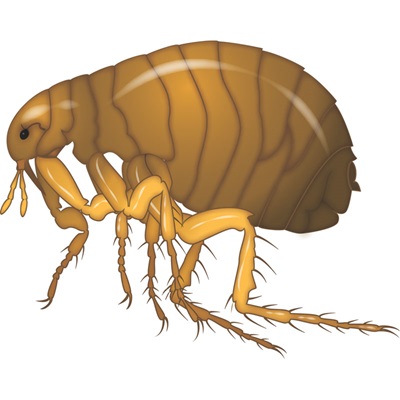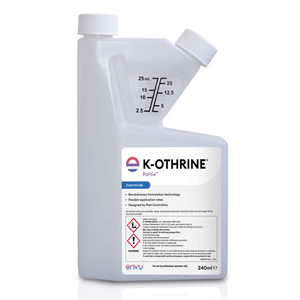How to eradicate fleas
It’s not just the heating bill some households will be concerned about this autumn, as turning on the heating will trigger flea eggs that are lying dormant around the house to hatch.
And it’s predicted to be a bigger problem than in previous years due to the recent surge in pet ownership.
This is also combined with milder temperatures this autumn, which Richard Moseley, product manager at Envu explains will extend the season, meaning both fleas and their eggs which have been brought into the home by pets will survive much longer than usual.
Explaining the scale of the issue, Richard states that flea infestations can escalate quickly due to the pest’s prolific breeding pattern, which can see them lay between 800 to 1,000 eggs within their lifecycle, for that reason quick identification is recommended.
How to identify flea infestations
Richard says that although flea infestations in domestic cases are usually easy to identify, it’s important pest controllers know what they are dealing with before visiting a property.
“Understanding if pets are in the house is the first step. Any animals that are present, should be inspected for fleas and bites and any itching or scratching,” says Richard.
He notes that humans can also get bites, particularly around the ankles, and this is an indicator of flea infestations spreading around the house.
Pre-treatment measures
If fleas are identified, properties should be vacuumed thoroughly to remove any larvae, fleas and debris from between gaps in the floorboards, on furniture and in carpets.
The vibrations caused by vacuuming may also cause fleas to advance from the pupation to adult stage, increasing the likelihood of the treatment having direct contact with the insect.
Vacuuming will also remove any dust and dirt which could act as a barrier between the insecticide and the pest. Particular attention should be paid to the areas where pets sleep.
“The cleaner the treatment area the better the product will work,” says Richard.
He adds that preventative flea treatment is the best way to control fleas in pets. “Spot-on treatments kill fleas through contact, rather than oral products where fleas must be attached and feeding for the treatment to take effect.”
Treatment
When it comes to treatment, Richard says pest controllers are advised to use a product that has a long-lasting residual effect. Consideration should also be given to the insecticide’s active ingredients, and resistance management if regular treatments are made.
“Once cleaning has taken place, pest controllers can come in and lay down a long-lasting residual insecticide, such as K-Othrine® Partix™, in areas that are infested or at a higher risk of infestation, for example the area where a pet sleeps,” he explains.
As an advanced insecticide, K-Othrine® Partix™ can be applied to a vast range of surfaces including wood and concrete floors and effectively targets insects due to the active ingredient Deltamethrin.
After treatment
Once the treatment has been undertaken, guidance should be provided to ensure treatment is successful and help prevent further infestations.
“Homeowners should avoid vacuuming for as long as possible after the treatment to allow the insecticide to work to its full capability,” advises Richard.
“It’s also important that pet flea treatment continues on a regular basis to prevent further infestations. Product labels should be checked thoroughly for application details, but they typically need to be treated every three months.”
Richard highlights that flea infestations are a common issue in many households. “Fleas are always a burden to deal with and can creep up on homeowners when they least expect it, causing a significant amount of distress.
“Being prepared to tackle these sorts of issues and offer advice to homeowners who are struggling is crucial and will also give pest controllers the upper hand when combating an infestation,” he concludes.


